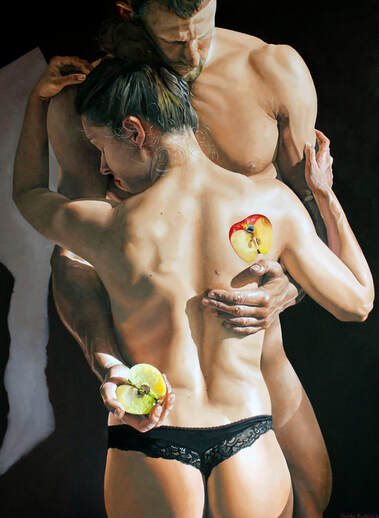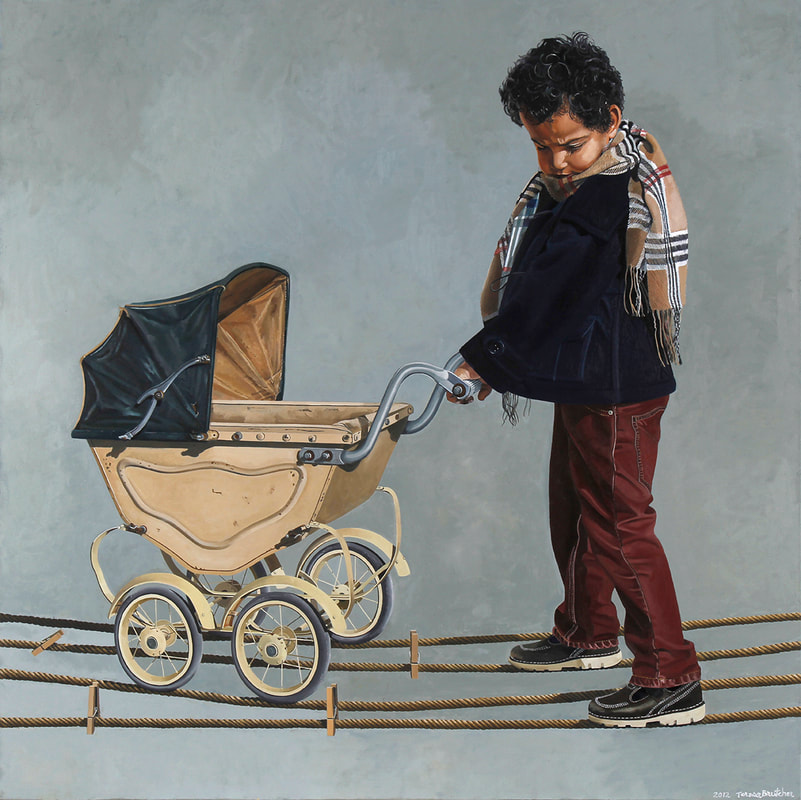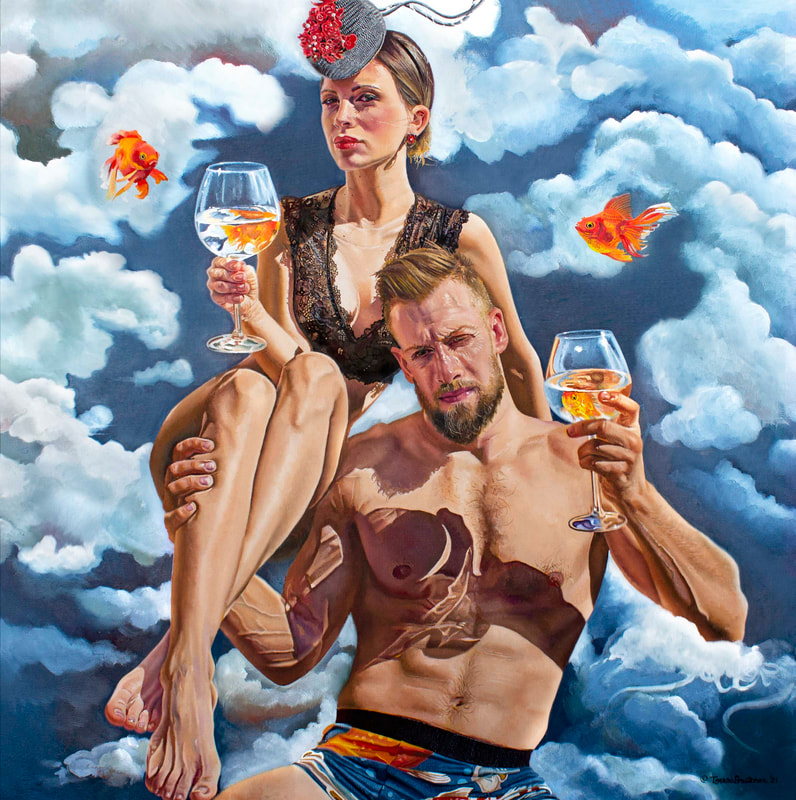Teresa Brutcher: Capturing and Illuminating the Complexities of the Human Spirit through Vivid Artistry and Symbolic Narratives |
an article written by Mona Lisa Abramovich
Teresa Brutcher (b. 1955), a remarkable American artist, has carved her own niche in the art world with her captivating depictions of the human figure. Her profound exploration of both the physical and spiritual dimensions of men and women has led to the creation of art that resonates deeply with viewers. Through her masterful use of light, color, and form, she brings forth emotions, stories, and universal themes that bind us together as human beings. Brutcher's artist statement serves as a window into her creative soul. Her primary focus on the human figure stems from her fascination with its intricate beauty and the wealth of information it holds. She adeptly employs vivid light, intense darks, and bold colors, along with exaggerated anatomical features, to convey the complexity of human emotions. Each brushstroke seems to uncover the layers of our shared humanity, laying bare the demons, secrets, joys, and hopes that make us who we are. Throughout her artistic journey, symbols and metaphors have played a pivotal role in Brutcher's work. These elements not only contribute to the narrative but also serve as visual cues that engage the viewer on multiple levels. In her series "The Apple," she delves into the symbolism of the forbidden fruit, exploring themes of danger and seduction that have resonated throughout literary history. Her latest series, "Nep Tuna and Poseidon," challenges and evokes the power of sea deities, inviting us to question their dominion over both the oceans and the depths of human experience.
At the core of Brutcher's art lies a profound quest for self-understanding and connection. Her paintings are a mirror of her inner struggles, hopes, and fears, yet she never loses sight of their universal relevance. As she grapples with her own emotions on canvas, she opens a channel for others to identify and understand their own feelings, fostering a sense of unity and empathy.
Brutcher's artistic drive is fueled by an innate need to explore, resolve, and share her innermost conflicts and aspirations. The canvas becomes her sanctuary, a place where she can work through these complexities and, in doing so, offer solace and insight to others. Her belief in the universality of personal struggles underscores her commitment to making art that speaks to the shared human experience. When it comes to developing her artistic vocabulary, Brutcher emphasizes the role of continuous learning and exposure. Her vocabulary evolves over time as she immerses herself in art history and a diverse range of subjects. These influences, she believes, stimulate and nurture her imagination, leading to reactions and artistic expressions that define her unique voice. The culmination of these influences is what she considers her "vocabulary," a visual language through which she communicates her ideas.
Brutcher's creative process reflects a balanced blend of premeditation and spontaneity. Each piece begins with a well-conceived story, a theme that she meticulously plans out, including the characters, their attire, and the symbols that will enhance the narrative. While she occasionally allows for spontaneous color choices to set the mood, the core structure of her work remains steadfast. Her inclination towards working in series adds depth to her storytelling, with each series functioning as a chapter that revolves around a central theme. The selection of ideas is a dynamic process for Brutcher, guided by her captivation with the theme at hand. An idea takes root from various sources – be it literature, personal experiences, or conversations – and is then allowed to grow organically. If the idea persists in its resonance and allure, it earns its place in her artistic repertoire. This rigorous selection process ensures that the themes she explores are those that will not only resonate with her but also deeply engage her audience.
In crafting a compelling composition, Brutcher identifies several key elements. Uniqueness is paramount, as she strives to express ideas in ways that are fresh and unparalleled. Light plays a pivotal role in her work, drawing viewers into her narratives with its hypnotic qualities. Beyond light, color, balance, and form harmonize to create compositions that captivate the audience's attention while conveying a meaningful message. When asked about artists who have left an indelible mark on her work, Brutcher acknowledges the influence of several masters. Caravaggio and Joaquin Sorolla's mastery of light resonates deeply with her, as their work possesses an undeniable allure that is difficult to look away from. Lucian Freud and Philip Pearlstein, both 20th-century painters, capture her admiration for their ability to reveal the intricate interplay between physical and psychological characteristics, as well as their representations of the human form's magnificence.
Brutcher's preferred medium is oil, a choice she makes for its versatility and sumptuous texture. The malleability of oil allows her to convey various levels of transparency and opacity, adding depth and brilliance to her colors. The layering possibilities in oil painting create a unique sense of dimension that sets the medium apart from others. In a world where artistic expression is a window to the soul, Teresa Brutcher's work stands as a testament to the power of the human figure to convey the most intricate facets of our existence. Through her profound exploration of light, color, form, and symbolism, she beckons us to connect with our shared experiences, offering a mirror to our emotions, struggles, and aspirations. As she continues to weave her narratives on canvas, Brutcher's art serves as an invitation to introspect, empathize, and appreciate the beauty and complexity of the human journey. |
SUPPORTARTICULATE
www.articulate.nu SUPPORT Monday - Friday 8:00 - 16:00 [email protected] +45 30 48 19 81 Head Quarters VAT DK40953191 |
|











